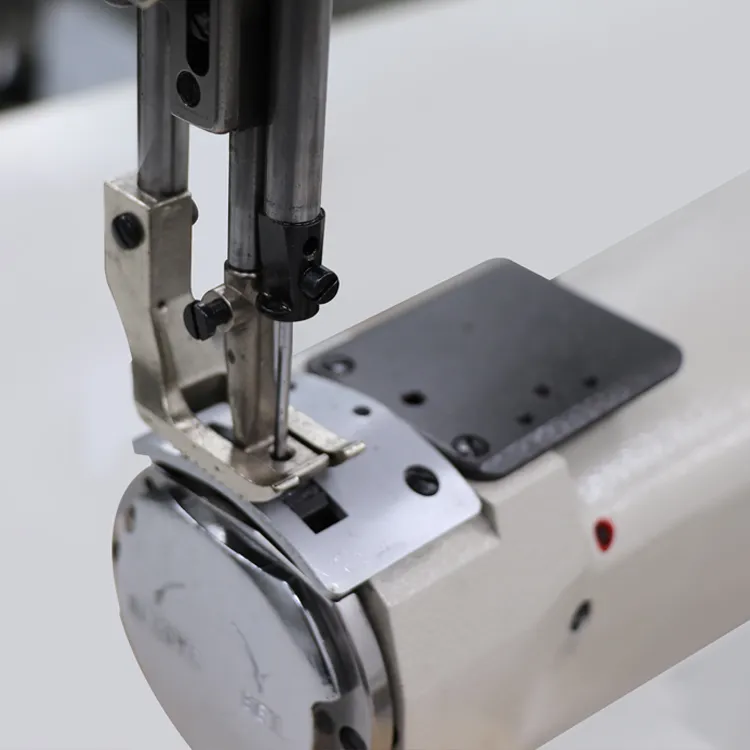Understanding the Distinctions Between Sergers and Overlock Machines for Sewing Enthusiasts
Understanding the Difference Between a Serger and an Overlock Machine
Sewing enthusiasts often find themselves exploring various types of sewing machines to achieve different effects and finishes in their projects. Among the many machines available, sergers and overlock machines are two popular options that frequently cause confusion. While they are sometimes used interchangeably, there are distinct differences that can significantly affect your sewing experience. This article aims to clarify these differences and help you make informed decisions for your sewing needs.
What is a Serger?
A serger, also known as an overlock machine, is designed to quickly sew seams and finish edges simultaneously. It is particularly valued for its ability to create a professional-looking finish on knit and stretch fabrics, which are common in modern apparel. A typical serger uses multiple threads (usually three or four) and employs loopers and needles to form a stitch that encloses the raw edges of the fabric, preventing fraying.
Sergers come with a variety of features that enhance their functionality. Many allow for adjustments like stitch length, differential feed, and stitch width, offering versatility for various sewing projects. The differential feed feature is especially noteworthy as it helps to prevent puckering or stretching, ensuring a smooth finish, which is critical when working with delicate or stretchy fabrics.
What is an Overlock Machine?
In reality, an overlock machine is essentially a type of serger. The term overlock specifically refers to the type of stitch that these machines create, which is characterized by its looped threads that run over the edge of the fabric. Overlock stitches are efficient for finishing seams and providing a clean edge, making them a staple in commercial garment manufacturing.
While all sergers create overlock stitches, not all overlock machines offer the same capabilities as a serger
. Some overlock machines may have limited functions and can only perform basic overlock stitching without the advanced features found in a typical serger, such as multiple thread options or stitch customization.what is the difference between a serger and overlock machine

Key Differences
1. Functionality and Complexity - Sergers are typically more versatile, capable of handling a variety of stitches, such as rolled hems, flatlocking, and cover stitching. They can accommodate projects ranging from garments to home decor. - Overlock machines might focus primarily on creating overlock stitches for seam finishing without additional features.
2. Thread Count - Sergers usually operate with three or four threads, allowing for more complex stitches and a more professional finish. Some advanced sergers can even use up to eight threads. - Basic overlock machines may only use two threads and offer limited stitch varieties.
3. Ease of Use - Many sergers come with user-friendly features, making them suitable for both beginners and experienced sewists. The ability to easily adjust stitch settings adds to their appeal. - Conversely, some overlock machines might be simpler and more straightforward but may not provide the same level of adjustability.
4. Price Point - Generally, sergers tend to be more expensive than basic overlock machines due to their advanced features and capabilities. - Overlock machines can be more budget-friendly but may compromise on versatility and stitch variety.
Conclusion
While both sergers and overlock machines are valuable tools for sewing enthusiasts, understanding their differences is crucial for selecting the right one for your needs. If you are looking for a machine that offers versatility and can handle a wide range of stitching tasks, a serger may be the best option. However, if your primary focus is on basic seam finishing using overlock stitches, an overlock machine could suffice.
In the end, both machines can significantly enhance the quality of your sewing projects, providing you with the professional appearance you desire. Whichever you choose, embracing the unique capabilities of these machines will undoubtedly expand your creative possibilities in the world of sewing.
-
Automatic Pattern Sewing Machine: Unlocking New Possibilities with CNC Sewing TechnologyNewsAug.26,2025
-
Automatic Pattern Sewing Machine: Enhancing Efficiency with Advanced CNC Sewing SolutionsNewsAug.26,2025
-
Automatic Pattern Sewing Machine: Revolutionizing Textile Manufacturing with CNC TechnologyNewsAug.26,2025
-
Lock Stitch Sewing Machine: Precision and Performance in Industrial StitchingNewsAug.26,2025
-
Lock Stitch Sewing Machine: Enhancing Efficiency with Advanced Stitching TechnologyNewsAug.26,2025
-
Lock Stitch Sewing Machine: Advancing Sewing Technology for Industrial ExcellenceNewsAug.26,2025
-
Lock Stitch Sewing Machine: Essential Technology for Precision StitchingNewsAug.26,2025


























